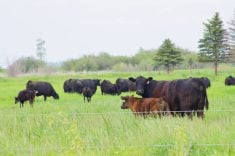CALGARY — People who feed cattle to get rid of excess grain aren’t doing the beef industry any favors, says a meat quality expert.
There’s too much competition from other products like pork, poultry and eggs for beef producers not to be more concerned about what kind of product consumers get, said Jeff Savell of Texas A & M University.
“There’s not a chicken farmer who says ‘I’m raising chickens to sell grain.’ He’s in the business of selling high quality poultry products to an ever changing supermarket that demands quality and consistency.”
Read Also

House ag committee to undertake several studies
The House of Commons standing agriculture committee has set its agenda for the coming months. Members began the fall sitting with a two-hour update on international trade
The consumer should be the one who dictates beef quality. Cattlemen must accept that and work toward producing better meat rather than thinking they are simply “grass farmers,” Savell said.
Speaking at the Alberta Cattle Feeders meeting, Savell defined quality in beef as being consistent, uniform, palatable and free of defects.
To trace quality in the United States a beef quality audit was done several years ago. It asked packers, retailers and restaurant chefs what they didn’t like about the product. The replies will be used to help producers develop better beef and give people what they want.
Packing houses said there was a lack of uniformity in the size of carcasses they were seeing. Retailers told the audit there is too much outside and seam fat, which is viewed as waste and devalues a cut of meat.
Ribeyes are too big, said restaurant owners. The average ribeye in the U.S. is 83 square centimetres and they want a steak half that size. Grocers told them they want a 60 square cm ribeye.

















